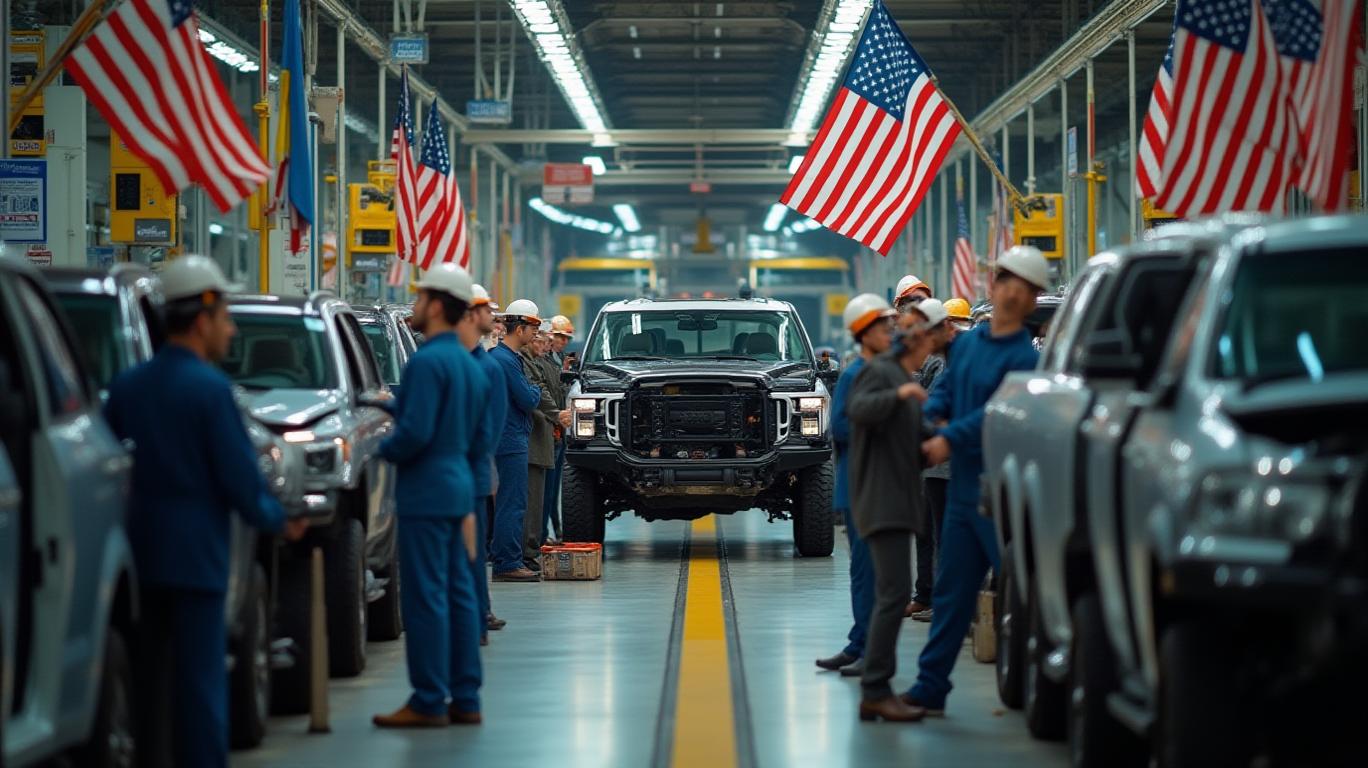Trump's Auto Tariff Rollback: A Bumpy Road to Recovery?
President Donald Trump’s administration has long wielded tariffs as a blunt instrument in its trade policy toolkit, but the latest move by Commerce Secretary Howard Lutnick signals a strategic pivot to soften the blow on U.S. automakers. The revised auto tariffs announced in 2025 aim to untangle a web of overlapping duties that threatened to inflate vehicle prices and destabilize supply chains. For investors, the changes present both opportunities and risks in an industry still navigating the unpredictable currents of Trump’s economic agenda.

Tariff Adjustments: A Lifeline or a Temporary Fix?
The administration’s most significant change is ending the叠加 of a 25% tariff on imported cars with a separate 25% duty on steel and aluminum. This dual burden, which had created a potential 50% tax on foreign-made vehicles, was a major point of contention for automakers like General Motors (GM) and Ford. The new rules also reduce tariffs on imported auto parts used in U.S.-built vehicles, with retroactive reimbursements for past duties.
The retroactive clause is a critical concession for automakers. GM alone spent over $2 billion on tariffs between 2018 and 2023, according to a Senate report. The ability to reclaim some of these costs could free up capital for investments in electric vehicle (EV) production or domestic plant expansions—a priority for the administration’s “Buy American” agenda.
Industry Response: A Mixed Reception
Automakers have long lobbied against the original tariffs, warning of cascading costs. A coalition of industry groups, including Toyota and Volkswagen, argued that the dual tariffs would raise vehicle prices by thousands of dollars, hurting sales and consumer confidence. The Commerce Department’s pivot appears to have eased these concerns: shares of GM and Ford rose 3% and 2%, respectively, following the announcement.
However, the policy’s flexibility remains a red flag. The Wall Street Journal reported that the 25% tariff on auto parts could still be adjusted, with exact terms pending further review. This uncertainty is compounded by Trump’s history of abrupt policy reversals, such as the 2019 steel tariff exemptions for Canada and Mexico.
Economic Impact: Job Creation vs. Market Volatility
The administration’s emphasis on domestic manufacturing aligns with its goal of revitalizing U.S. jobs. The auto industry directly employs over 800,000 workers, with another 6 million jobs in ancillary sectors. By incentivizing U.S. production, the tariffs could bolster employment in states like Michigan, which the president visited to announce the policy.
Yet the long-term economic benefits are far from certain. Analysts at Goldman Sachs estimate that the original tariff structure could have increased vehicle production costs by up to $4,000 per car by 2026. While the revised rules mitigate this risk, lingering uncertainty about future policies may deter automakers from committing to multi-billion-dollar investments in U.S. facilities.
Conclusion: A Fragile Win for Investors
The Commerce Department’s tariff adjustments are a tactical retreat that balances political imperatives with industry demands. For automakers, the removal of overlapping duties and retroactive refunds provide immediate relief, potentially boosting earnings and stock valuations. GM’s stock, for instance, has risen 18% year-to-date amid signals of policy easing—a trend that could continue if the administration follows through on its promises.
However, the policy’s conditional nature—tying tariff reductions to domestic investment commitments—adds layers of risk. Automakers may face pressure to prioritize U.S. production over cheaper foreign options, even if global supply chains offer better cost efficiency. Meanwhile, Trump’s history of tariff volatility means investors must remain vigilant to sudden shifts, such as a potential reinstatement of duties if trade disputes flare.
In the near term, the auto sector’s recovery hinges on two factors: the administration’s consistency in implementing the revised rules and automakers’ ability to capitalize on tariff relief through U.S. expansion. For now, the policy offers a cautious optimism—but the road ahead remains riddled with potholes.
Data sources: U.S. Department of Commerce, Wall Street Journal, Goldman Sachs estimates.


_442a2dcc1749832873286.jpeg)
_e68fac6d1749831664430.jpeg)






